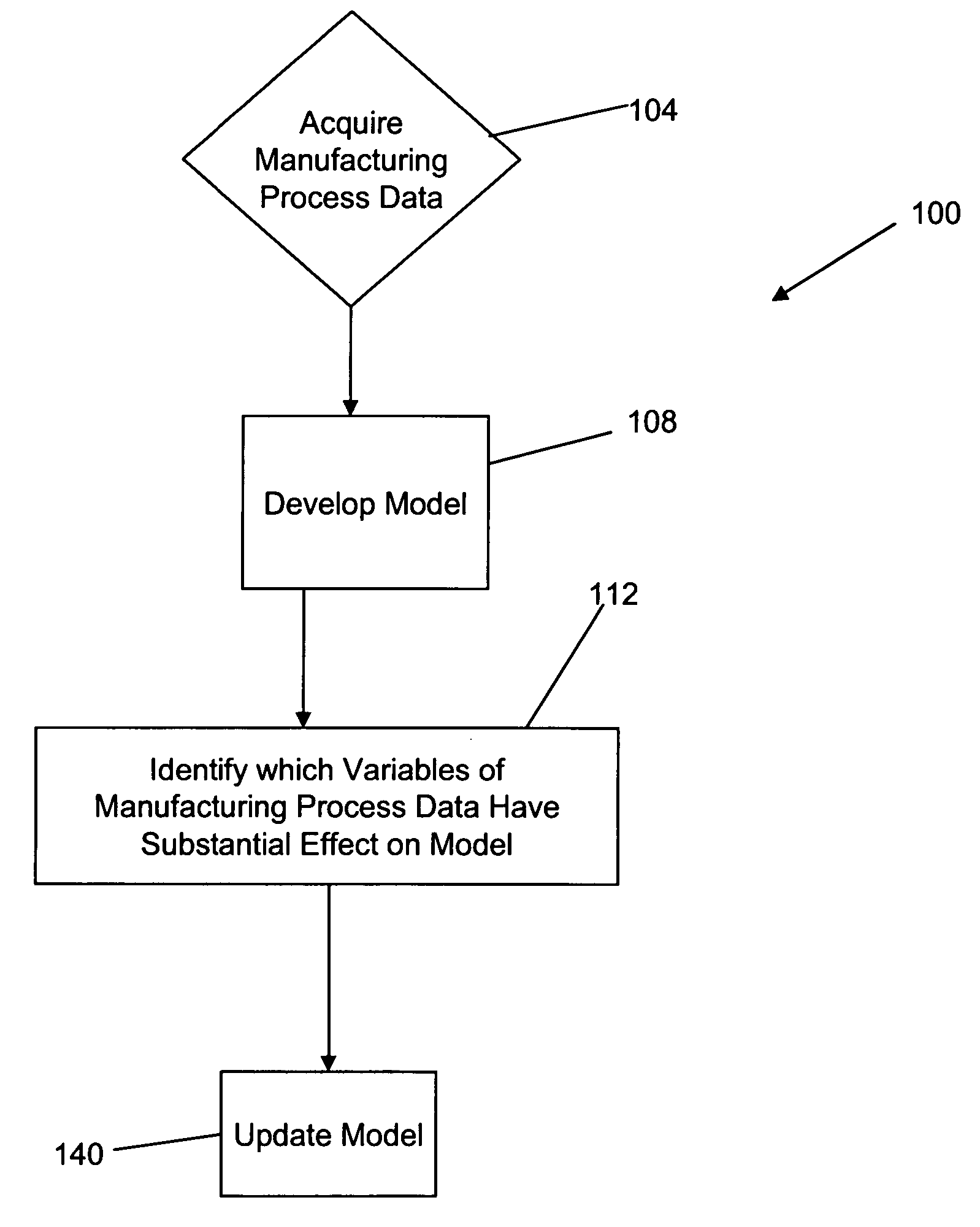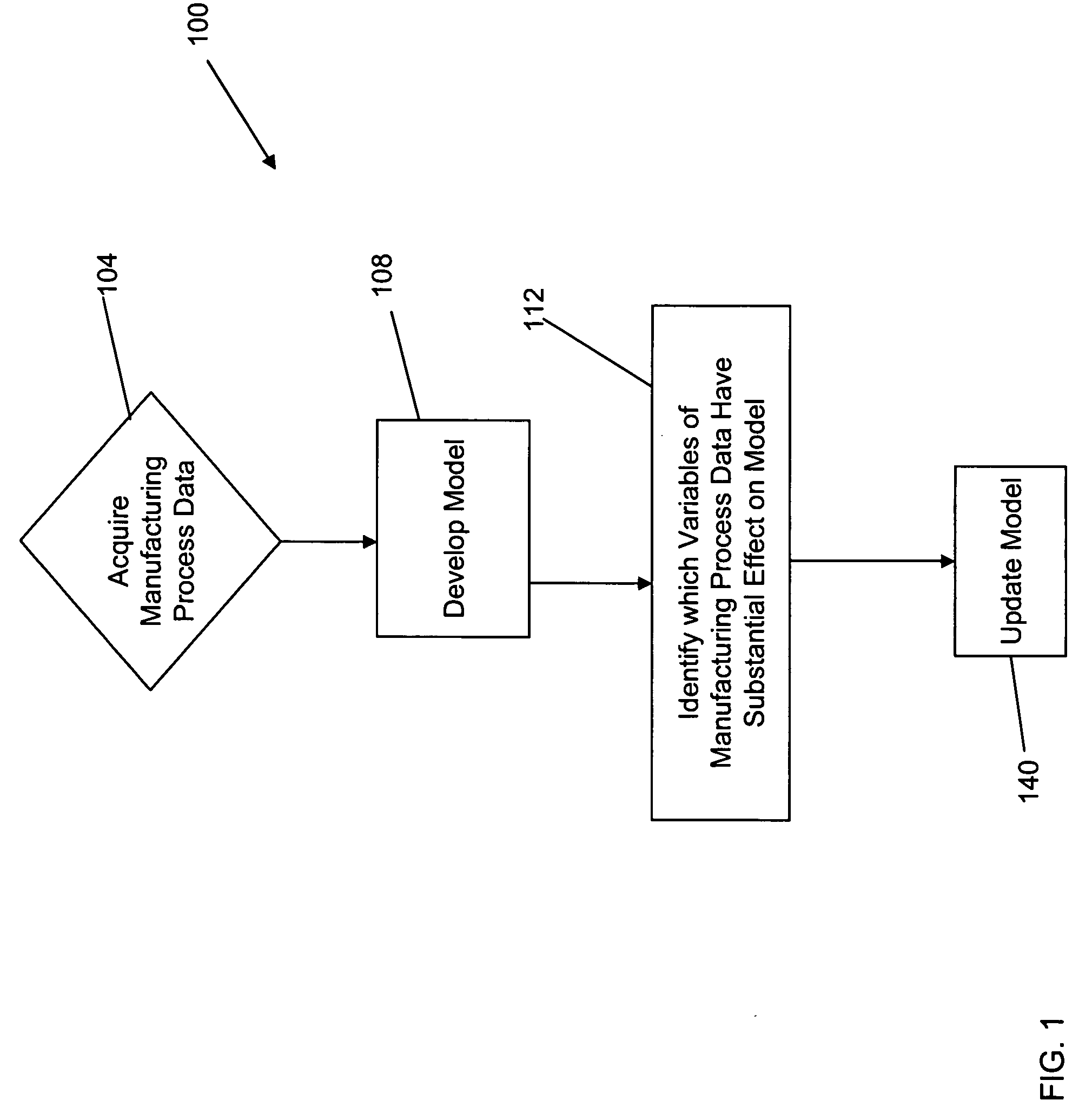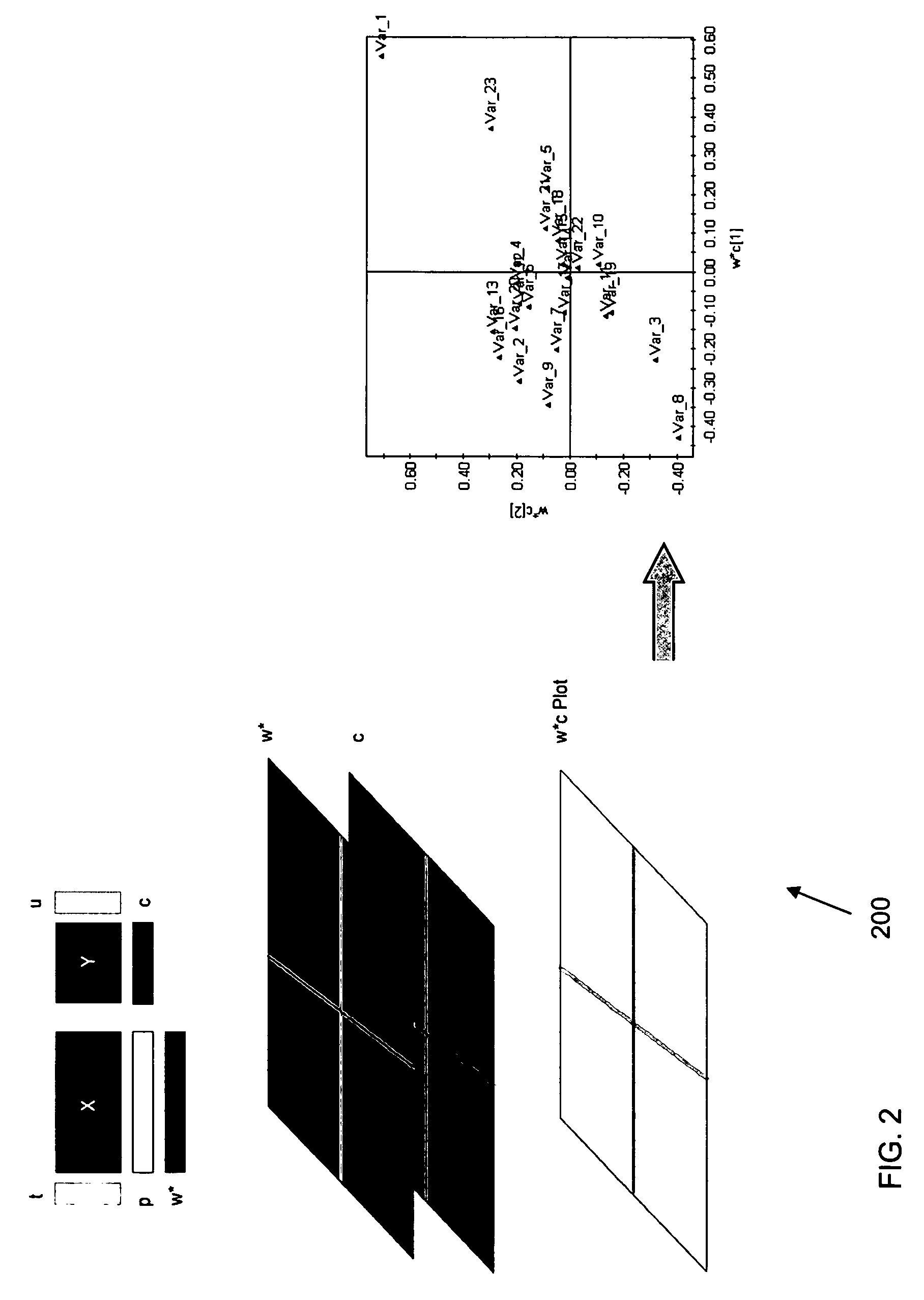Multivariate control of semiconductor processes
- Summary
- Abstract
- Description
- Claims
- Application Information
AI Technical Summary
Benefits of technology
Problems solved by technology
Method used
Image
Examples
example
[0054] By way of illustration, an experiment was conducted to detect faulty wafers (wafers having photoresist located on the surface of the wafer) of a semiconductor fabrication process. In this experiment, 24 wafers were output by the manufacturing process. Of the 24 wafers, 19 of the wafers (wafers 1, 2, 4, 5, 6, 8, 9, 11, 12, 13, 14, 16, 17, 19, 20, 21, 22, 23, and 24) have no photoresist material located on the surface of the wafer. Wafers 3, 7, 10, 15, and 18 have photoresist on the surface of the wafer.
[0055] A residual gas analysis (RGA) was conducted on the wafers to acquire the RGA spectra from 2 AMU through 80 AMU (79 different measurements) for each of the wafers. EQN. 1 was used to format the manufacturing data, the matrix X has K=79 columns (79 measurements for each of 2 AMU through 80 AMU) and N=19 rows (19 wafers corresponding to all the non-photoresist wafers). As described previously herein, the matrix X was then scaled (the average of each column of the matrix X w...
PUM
 Login to View More
Login to View More Abstract
Description
Claims
Application Information
 Login to View More
Login to View More - R&D
- Intellectual Property
- Life Sciences
- Materials
- Tech Scout
- Unparalleled Data Quality
- Higher Quality Content
- 60% Fewer Hallucinations
Browse by: Latest US Patents, China's latest patents, Technical Efficacy Thesaurus, Application Domain, Technology Topic, Popular Technical Reports.
© 2025 PatSnap. All rights reserved.Legal|Privacy policy|Modern Slavery Act Transparency Statement|Sitemap|About US| Contact US: help@patsnap.com



